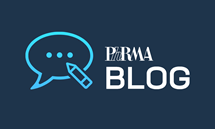In early December, the National Institute of Standards and Technology (NIST) issued a Request for Information on a Draft Framework that would allow government agencies to “march-in” and seize patent rights based on the price of a product. If finalized, this misinterpretation of the Bayh-Dole Act would have a devastating effect on public-private research collaborations and chill American innovation across industries such as tech, energy, defense and more. While repercussions would be felt by all who rely on collaboration with government-funded organizations to innovate, the potential impact on medical innovation, particularly for our most vulnerable patients and families waiting for new treatments and cures, is extremely concerning.
PhRMA recently submitted comments detailing critical concerns with the march-in guidance, highlighting its damaging impact on patients and the world-leading American innovation ecosystem.
The guidance could upend America’s status as a global leader in innovation.
Before the enactment of the Bayh-Dole Act in 1980, the U.S. government retained ownership of the patents on federally funded inventions, only licensing 5% for use in the private sector. This meant tens of thousands of government patents sat on shelves collecting dust. The Bayh-Dole Act, and later the Federal Technology Transfer Act of 1986, created a symbiotic innovation ecosystem between the public and private sectors, which has allowed each sector to perform the role it does best: universities and research centers receiving federal funds perform basic research to identify nascent concepts, and the private sector contributes the technical expertise and takes the significant and necessary financial risks to take the initial research from the lab to the marketplace. This partnership is what ultimately allows for ideas and early research to become lifesaving cures for patients.
Not only would the proposed guidance gravely impact these vital partnerships, chilling American innovation, but it would also discourage private-sector investment in incredibly risky early-stage research. On average, it takes 10-15 years and costs $2.6 billion to research and develop a single new medicine and only 12% of new molecular entities that enter clinical trials eventually receive FDA approval. This massive failure rate coupled with the new risk of government interference with patent rights would make future collaborations in this ecosystem nearly impossible for investors.
Public-private partnerships have fueled American global leadership in innovation. Between 1996 and 2020, academic technology transfers have contributed $1.9 trillion to the U.S. economy, created 6.5 million jobs, helped form 17,000 startups, and led to the development of over 200 new drugs and vaccines.
The foundation for the use of price for march-in does not exist in the law.
The Bayh-Dole Act intentionally does not contain any language discussing price, and the Draft Framework’s injection of a product’s price into the guidance an agency should follow when considering whether to exercise march-in rights illustrates a critical misunderstanding of the law’s intent. Senators Birch Bayh and Bob Dole, the legislation’s original sponsors, have even unequivocally stated that “Bayh-Dole did not intend that government set prices on resulting products” because the “purpose of the act was to entice the private sector to seek public-private research collaboration.” NIST’s new interpretation not only contradicts the bill’s original authors, but also its own previous Green Paper analysis, decades of clear agency precedent, and overlooks previously failed experiments by the NIH to institute reasonable pricing standards. The choice to go against decades of precedent could sour the relationship between public organizations like the NIH and their private-sector partners.
The Draft Framework creates new uncertainty for innovators.
The United States leads the world in innovation in part because of the regulatory certainty that the Bayh-Dole Act has assured since 1980. However, the Draft Framework raises more questions than answers with respect to significant portions of the legislation’s original framework.
NIST included eight factual scenarios that end without conclusions on the proper determination of the march-in inquiry and appear to only consider worst-case scenarios. These scenarios fail to guide the full spectrum of technologies that would be subject to the Draft Framework and are based on assumptions that significantly weaken their credibility. While NIST warns that these scenarios should not be interpreted as creating an obligation to exercise march-in rights, the scenarios create massive uncertainty around how the government could use march-in.
NIST’s Draft Framework would essentially re-write aspects of the Bayh-Dole Act and is an unfounded attempt to impact medicine prices. Not only is the Draft Framework deeply flawed, but it could have a lasting negative impact on American innovation across sectors, the United States’ status as a global leader in innovation, and public health. These effects not only stand as antithetical to the Biden Administration’s stated goals, but they also relegate potentially breakthrough medical innovations for patients to the storage shelves of research centers around the country.
Read our full comments here.



